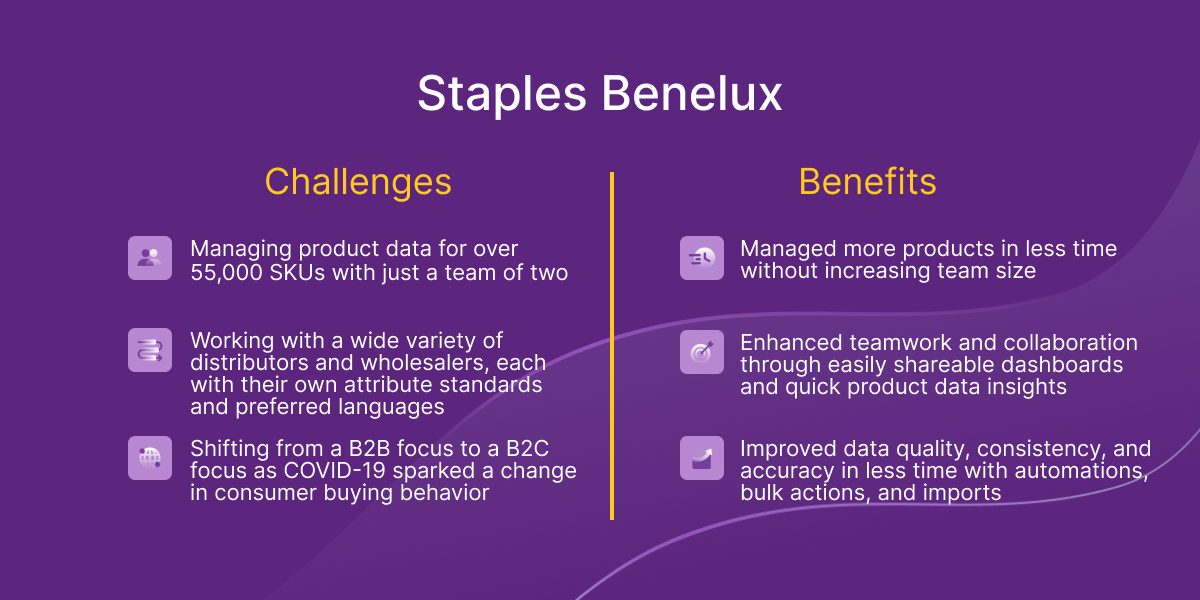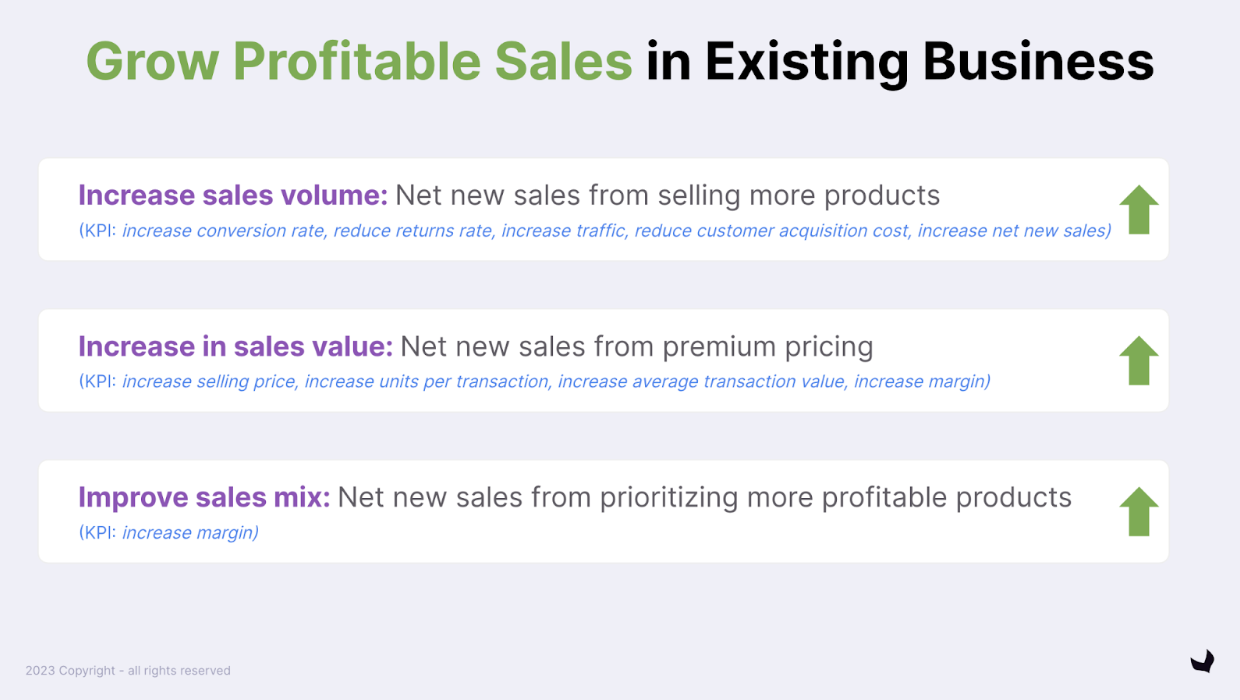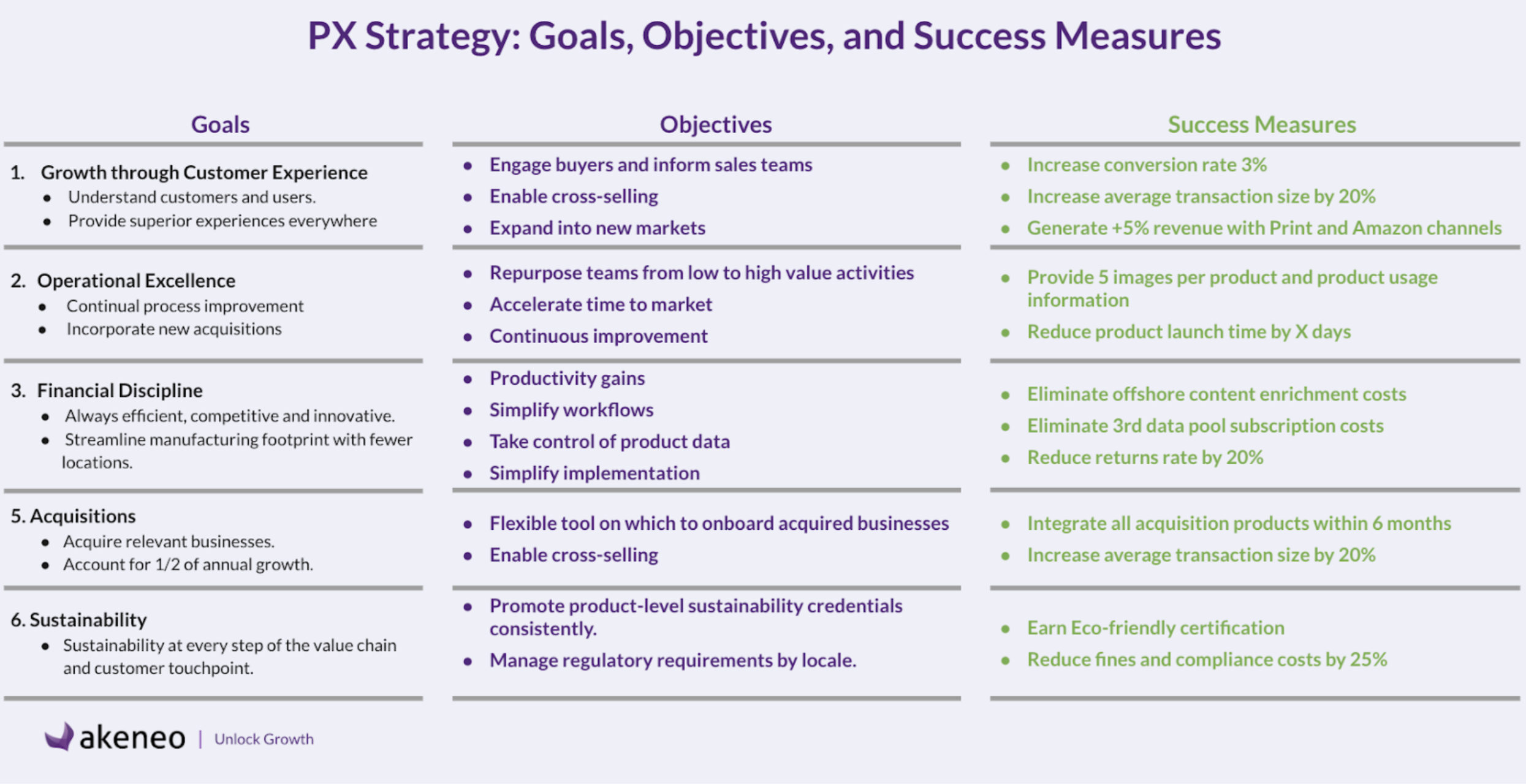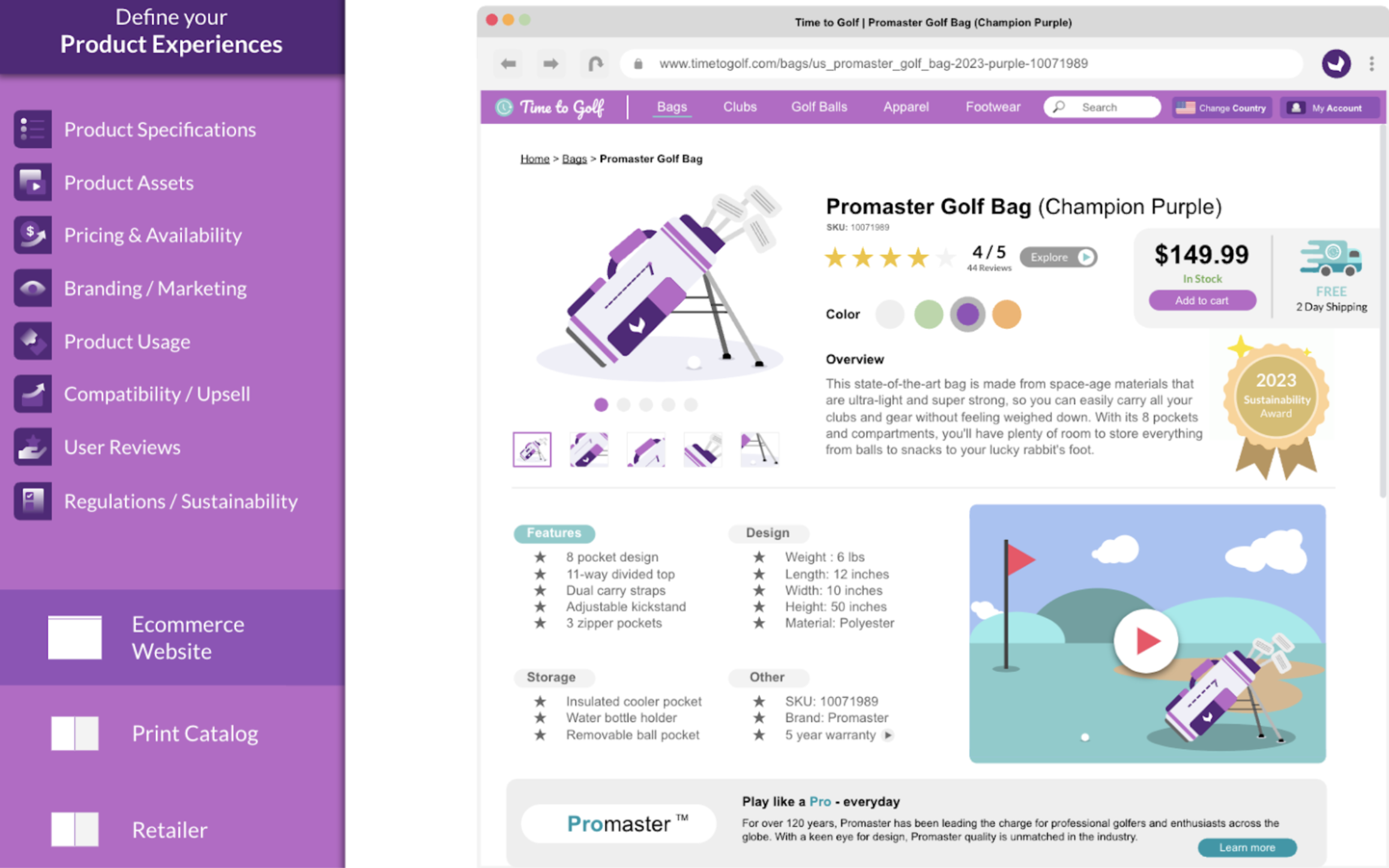Artificial Intelligence (AI) is revolutionizing the realm of retail by introducing innovative solutions for product data management and beyond. Retail giants, driven by the desire to maintain competitiveness, are embracing AI to optimize their operations, enhance customer experiences, and extract valuable insights from vast datasets.
We often see AI manifest itself into things like chatbots and virtual shopping assistants, but we’re also seeing retail giants utilize machine learning, process automation, and predictive analytics to improve internal operational efficiency and streamline repetitive, time-consuming tasks for their employees.
As the AI market in the retail sector is projected to reach $31 billion by 2028, it is imperative to spotlight those who are capitalizing on this technological trend. Let’s dive into how five different retailers have created practical applications of AI.
1. Carrefour Adopts ChatGPT to Elevate Shopping Experiences
Carrefour, a titan in the retail industry, has taken a stride forward by integrating OpenAI’s ChatGPT into its eCommerce platform.
AI Transforms Customer Interaction at Carrefour via ChatGPT
Carrefour recently introduced an inventive tool: Hopla. This tool incorporates OpenAI’s ChatGPT4 within its eCommerce interface. This groundbreaking advancement within the retail sector empowers customers to curate their shopping baskets based on personalized preferences.
Hopla: The Intelligent Shopping Companion
Launched in June 2023, Hopla offers the following services:
- Generation of shopping lists
- Provision of recipe suggestions
- Creation of shopping baskets
- Swift responses to user inquiries, streamlining the shopping process
- Instant access to tailored solutions such as classic, organic, or vegan recipes, budget constraints, and seasonal ingredient suggestions
AI’s Crucial Role in Retail Innovation
By partnering with OpenAI, Carrefour positions AI at the core of its future retail development strategy. AI not only enhances customer experiences but also yields benefits in marketing and product data management, particularly in ensuring data accuracy.
A notable advantage is that this AI solution adheres to GDPR regulations, ensuring data privacy.
2. Sephora: Pioneering Cosmetics and Fragrance Group Utilizes ChatGPT
Overcoming initial reservations toward adopting AI advancements, Sephora is now employing AI to offer personalized product recommendations. Leveraging user-specific preferences and attributes, Sephora’s digital transformation is in full swing.
AI-Driven Evolution at Sephora
A leading cosmetics and fragrance retailer, Sephora is accelerating AI development through the establishment of an AI Factory. Comprising a 12-member team, this initiative operates within the LVMH retail subsidiary’s Digital&IT department. The project’s goal is to optimize operations and enhance customer experiences across 15 countries.
Streamlining Operations with Dataiku and Google Cloud
To this end, Sephora employs the Dataiku platform on Google Cloud for the development of machine learning solutions that create:
- Incremental enhancements of existing use cases
- Enhanced collaboration by merging development and engineering functions
- Implementation of Agile methodologies and CI/CD chains for shortened deployment times and reduced maintenance intervals through MLOps principles
This transformative approach expedites deployment in new markets and the development of innovative models.
3. Mondial Tissus and AI: Accelerating Product Information Management
A prominent French fabric retailer, Mondial Tissus has optimized geographic expansion and time-to-market by integrating ChatGPT AI through the Bee by Dataggo connector, in conjunction with Akeneo PIM.
Optimizing Processes with ChatGPT
This automated solution enhances the quality of product information and streamlines localization for international markets. Consequently, new assets are generated, product knowledge is enriched, and regulatory compliance is ensured. This strategy has facilitated expansion into new markets and elevated both employee and customer experiences.
Accelerating Time-to-Market
Retailers and brands face the imperative to expedite time-to-market. Retailers such as Mondial Tissus manage a multitude of local and international suppliers, necessitating swift content deployment. AI proves instrumental in shortening time-to-market by:
- Delivering optimized information at speed
- Accelerating data collection and cleansing procedures
- Facilitating data structuring and localization
AI-enabled translation capabilities expedite international endeavors, eliminating translation bottlenecks. By harnessing AI, companies liberate personnel to focus on high-value tasks.
4. Walmart: Conversational Engagement via OpenAI’s GPT-4
American retail behemoth Walmart is embarking on an AI experiment at its Levittown store in New York. The endeavor, overseen by the in-house team “Kepler,” aims to:
- Enhance customer and in-store employee experiences
- Optimize inventory management through AI-enabled detection of out-of-stock or misaligned products on shelves
- Identify defective items and popular customer choices at speed and scale
Additionally, Walmart leverages OpenAI’s GPT-4 to offer conversational experiences while also utilizing other significant language models.
Good to know 💡
Walmart’s initiatives transcend task-based chatbots, focusing on natural language understanding specific to the retail context.
Desirée Gosby, Vice President of Emerging Technologies at Walmart Global Tech, underscores the significance of generative AI for customer interaction, akin to the role of mobile technology.
Walmart has introduced a virtual fitting application coupled with AI.
Customers photograph themselves in undergarments, and the application overlays desired garments, replicating shadows and fabric folds. This innovation aims to reduce the 30% return rate of online orders, particularly apparel.
5. Zalando: 3D Avatars and Personalized Shopping via ChatGPT
Zalando, the German online fashion platform, endeavors to curtail product returns and amplify online conversions through AI. Despite offering free returns, the company aims to minimize returns due to economic and ecological reasons.
Zalando introduced “virtual fitting rooms” that initially underwent testing on select items, then specifically on jeans—a highly returned category. Customers create a 3D avatar and virtually try various jean sizes, elevating jean retention from 28% to 40%.
Simultaneously, the “Size & Fit” team is crafting a body measurements feature for personalized advice. Zalando also intends to introduce an online personal shopper via ChatGPT that enables an intuitive and tailored exploration of Zalando’s offerings.
Bonus: Prominent Retailers Harnessing ChatGPT – Will You Join Them?
Though these retailers are early adopters of generative AI, they are not alone in this venture. Curious about other retail giants bolstering their processes with AI?
Here’s a glimpse:
- Coca-Cola has collaborated with ChatGPT since February to enhance marketing and explore new sales avenues.
- eCommerce platform Shopify integrated ChatGPT in March, generating customer answers and product recommendations.
- Instacart, a food delivery company, embraced AI in March, enabling users to inquire about food, solicit recipe ideas, or compile lists of nutritious ingredients.
Embracing the Evolution of AI in Retail
As the retail landscape continues to evolve, it is crucial to forego uncertainty and harness the full potential of AI. Rather than dwelling on doubts, let’s focus on embracing this transformative technology to cultivate personalized and enhanced interactions across the entire customer journey. The fusion of artificial intelligence and human ingenuity promises an exciting and infinitely promising retail future for those ready to embrace it. Are you?
Start preparing your organization to take full advantage of the potential AI has to offer with a foundational Product Experience (PX) Strategy.






























